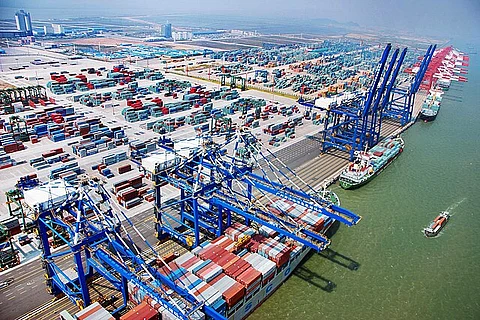

U.S. and Chinese officials announced on Tuesday a new framework agreement to reinstate a trade truce initially reached in Geneva last month, following intense negotiations in London.
The deal seeks to address escalating tensions over China’s restrictions on rare earth mineral exports and U.S. retaliatory measures, including curbs on semiconductor design software and aircraft parts.
U.S. Commerce Secretary Howard Lutnick emphasized the agreement’s significance, stating, “We have reached a framework to implement the Geneva consensus and the call between the two presidents.”
Both sides will now seek approval from President Trump and President Xi Jinping to finalize the terms.
The London talks, which extended late into the night at Lancaster House, focused on resolving disputes that threatened to unravel the Geneva deal.
China’s continued limits on rare earth minerals prompted U.S. export controls, but the new framework promises to roll back some of these measures.
Lutnick confirmed that American concerns over China’s mineral restrictions have been addressed, noting, “We do absolutely expect the topic of rare earth minerals and magnets with respect to the United States of America will be resolved in this framework implementation.”
China’s Vice Commerce Minister Li Chenggang echoed this, stating a trade framework had been reached in principle, though details remain pending.
While the agreement marks progress, analysts remain cautious about its long-term impact.
Josh Lipsky of the Atlantic Council’s GeoEconomics Center remarked, “They are back to square one but that’s much better than square zero.”
With a 90-day tariff pause set to expire on August 10, both nations face pressure to negotiate a broader deal to prevent tariffs from surging to 145% for the U.S. and 125% for China.
The framework offers a temporary reprieve, but deep-seated differences over trade policies persist, leaving the future of U.S.-China economic relations uncertain.